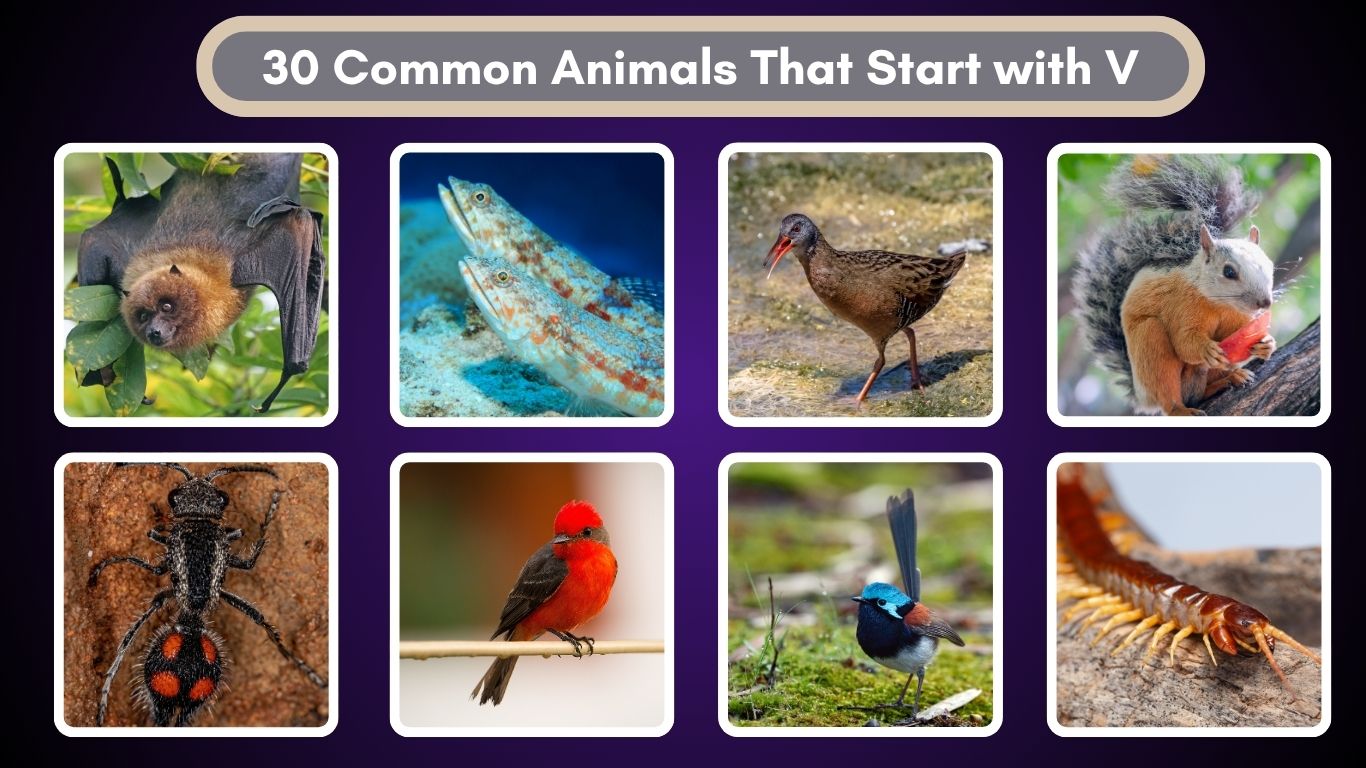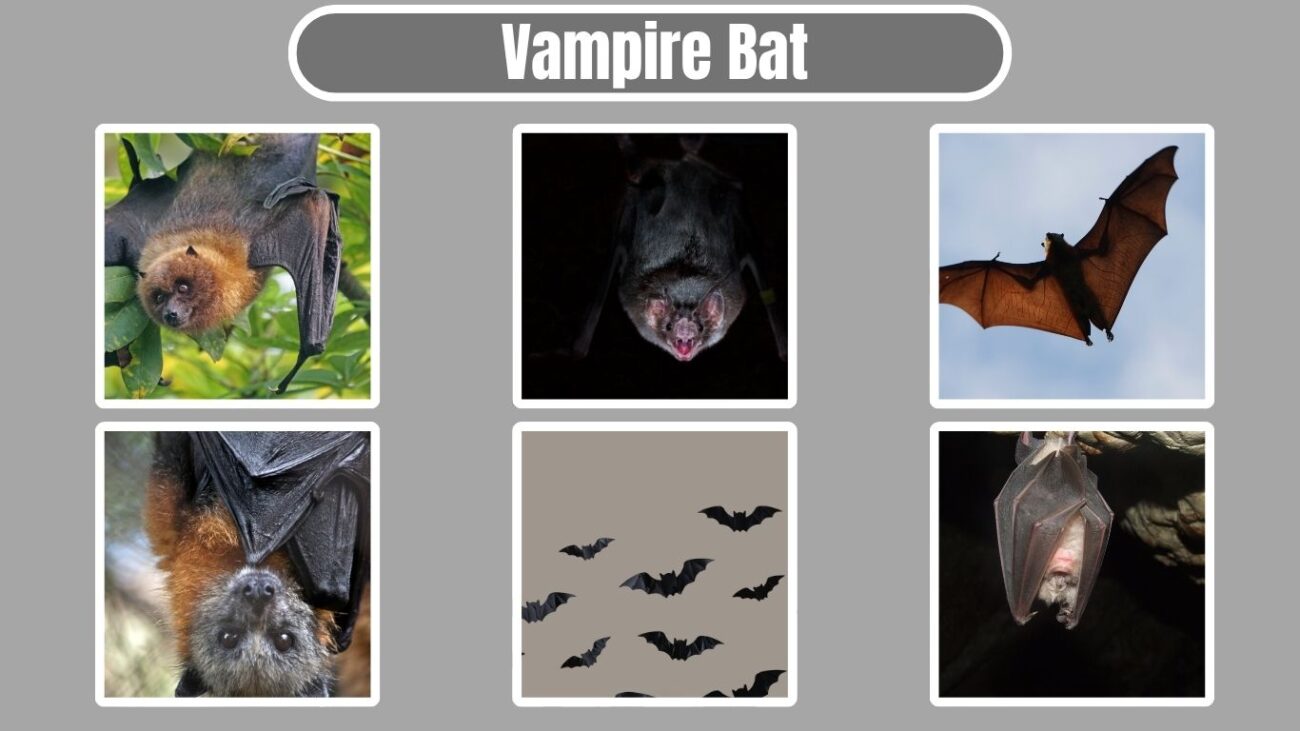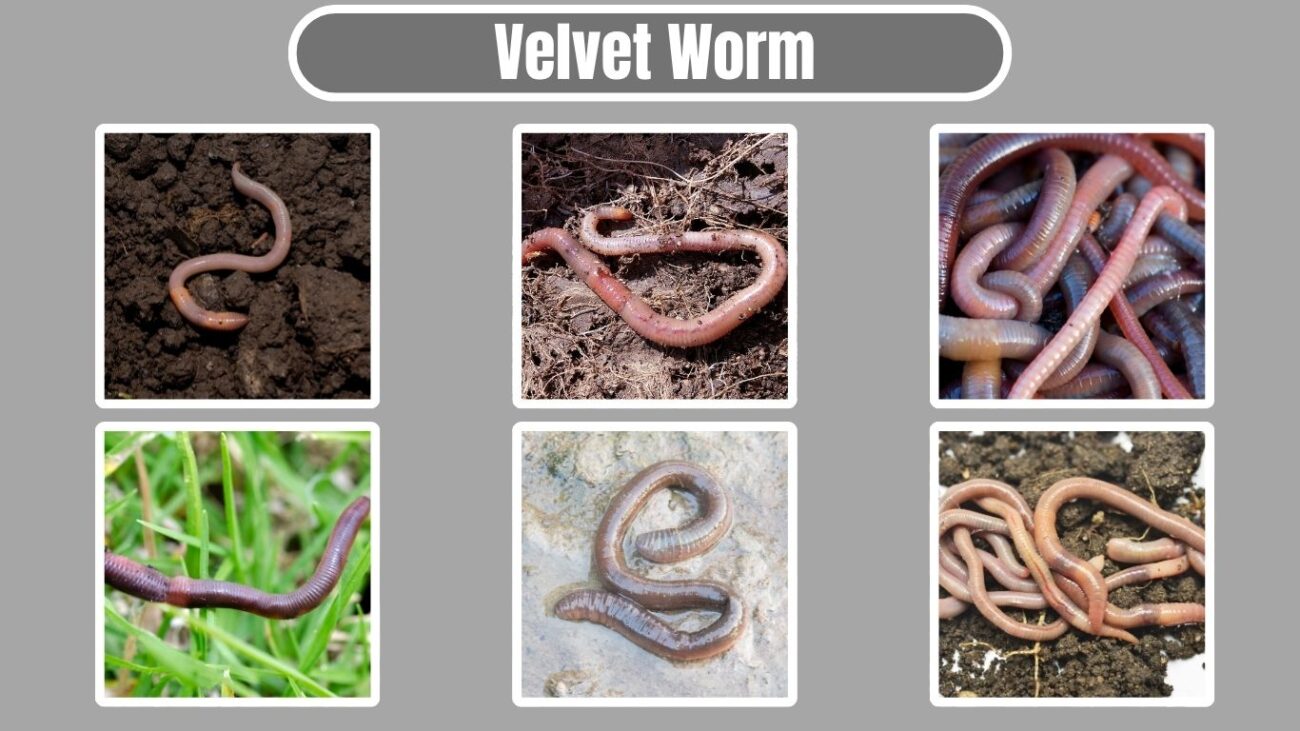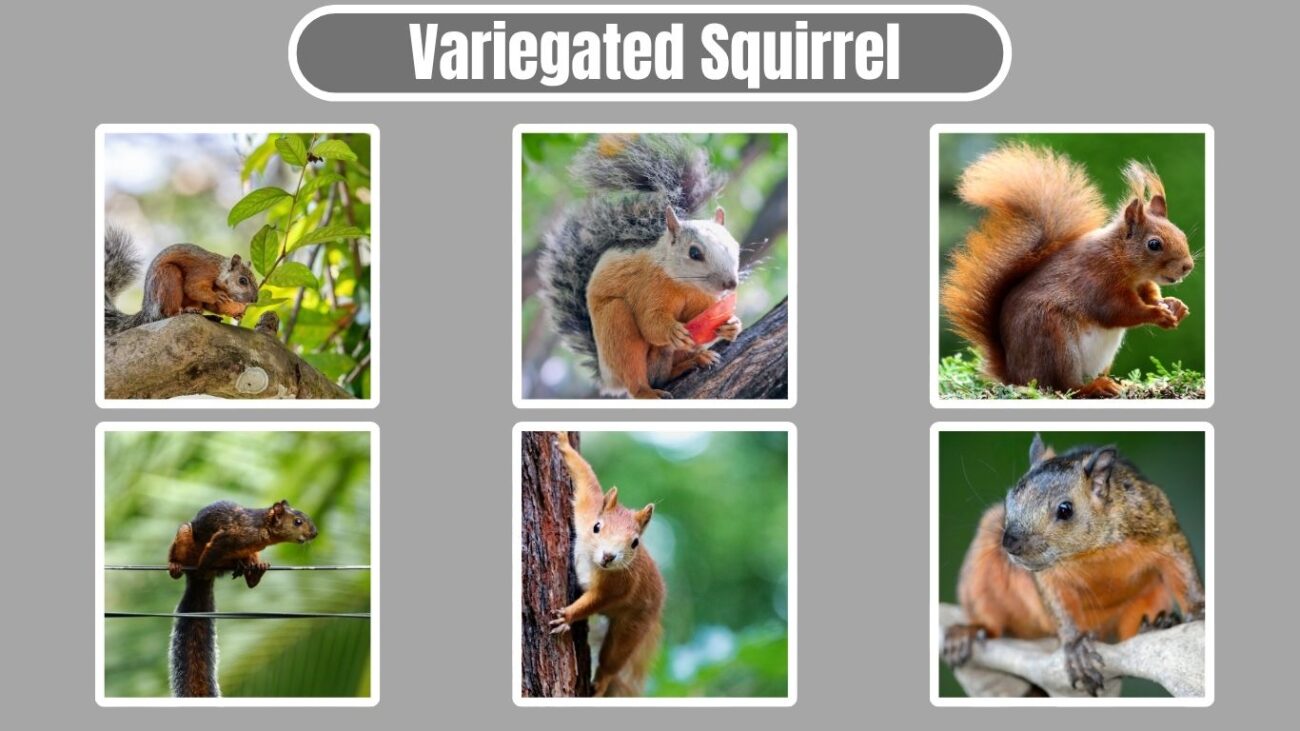Animals that begin with the letter V may not be as numerous as some other letters, but they represent an incredible range of life, from colorful birds and graceful mammals to striking insects and mysterious deep-sea creatures. Whether it’s the aerial elegance of the Vermilion Flycatcher, the nocturnal mystery of the Vampire Bat, or the prehistoric charm of the Vietnamese Mossy Frog, these creatures bring unique traits and beauty to the natural world.
In this list, you’ll explore 30 animals that start with V, including their sizes, habitats, diets, behaviors, and the vital roles they play in their ecosystems. From familiar names to hidden gems of the animal kingdom, this collection offers a fascinating glimpse into the variety of wildlife tied together by a single letter.
1. Vampire Bat
The Vampire Bat is a small, nocturnal mammal found in Central and South America. It’s famous for feeding on the blood of other animals, especially livestock. Despite its fearsome reputation, it only drinks small amounts and does so without harming the host seriously.
Vampire bats are typically around 3 inches (7.5 cm) long with a wingspan of up to 7 inches (18 cm). They have gray-brown fur, a short muzzle, and heat sensors on their noses to locate blood vessels.
These bats live in colonies and use strong social bonds, often sharing food with others. Their saliva contains anticoagulants, which are even used in modern medicine.
2. Vulture
Vultures are large birds of prey known for scavenging carrion (dead animals). They play a crucial role in the ecosystem by cleaning up decomposing remains, preventing the spread of disease.
There are both New World vultures (like the turkey vulture) and Old World vultures (like the griffon vulture). Most have bald heads, long wingspans (up to 10 feet in some species), and strong, hooked beaks.
Vultures are found on every continent except Australia and Antarctica. They prefer open landscapes, deserts, savannas, and mountainous areas where they can soar for miles in search of food.
3. Vervet Monkey
The Vervet Monkey is a medium-sized primate native to Eastern and Southern Africa. It has a grayish coat, black face, and long limbs with a tail almost as long as its body—reaching up to 20 inches (50 cm).
These monkeys are social animals, living in groups called troops that can number over 30 individuals. They are highly intelligent and have a complex system of vocal communication.
Vervets are omnivores, eating fruits, leaves, seeds, and insects. They’re often seen near human settlements and are known for their curiosity and occasional mischief in towns and farms.
4. Virginia Opossum
The Virginia Opossum is North America’s only native marsupial. It is about the size of a house cat, with grayish fur, a pointed snout, and a long, hairless prehensile tail used for grasping and balance.
They are adaptable scavengers, feeding on fruits, insects, small animals, and even garbage. Opossums are nocturnal and solitary, often found near forests, wetlands, and urban areas.
A well-known defense mechanism is “playing dead” or “playing possum”—where they become limp and emit a foul odor to avoid predators. Despite their reputation, they help control pests like ticks and are immune to many venomous bites.
5. Vine Snake
Vine Snakes are slender, tree-dwelling snakes found in Asia, Central America, and parts of Africa. Their body resembles a vine or branch—long, narrow, and usually green or brown—allowing perfect camouflage among foliage.
Most vine snakes grow up to 4–6 feet (1.2–1.8 meters) long but are extremely thin. They have large eyes with horizontal pupils and a pointed snout, giving them a unique appearance.
They are mildly venomous and primarily feed on lizards, frogs, and birds. Vine snakes are calm and shy but can inflate their necks when threatened, revealing colorful skin between their scales as a warning.
6. Velvet Worm
The Velvet Worm is a fascinating invertebrate that looks like a mix between a caterpillar and a worm. It’s soft-bodied, segmented, and covered in velvety skin. These creatures are ancient—dating back over 500 million years—and are found in moist forests across Central and South America, Africa, and parts of Asia and Australia.
Velvet worms range from 0.5 to 8 inches (1–20 cm) in length and come in earthy colors like brown, blue, or black. They have tiny, stubby legs and are famous for their hunting method: they squirt a sticky slime to trap prey like insects.
Despite their worm-like appearance, they’re more closely related to arthropods and are considered a “living fossil.”
7. Violet Sabrewing (Hummingbird)
The Violet Sabrewing is one of the largest and most vibrant hummingbirds, native to Central America. Males have striking violet-purple feathers with iridescent blue hues, while females are slightly duller with greenish backs and gray bellies.
These birds are around 5.5 inches (14 cm) long, with long, curved bills and fast, humming wings. They live in tropical forests and cloud forests from southern Mexico to Panama.
Like other hummingbirds, they feed on nectar, using their specialized tongues, and also consume small insects. Their dazzling color and rapid movement make them a favorite among birdwatchers.
8. Vampire Squid
Despite its name, the Vampire Squid (Vampyroteuthis infernalis) is neither a true squid nor a vampire—it’s a deep-sea cephalopod that lives in oxygen-deprived zones of the ocean, up to 3,000 feet (900 meters) deep.
It’s about 1 foot (30 cm) long and has a dark red or black body with cloak-like webbing between its arms, giving it a spooky appearance. Instead of ink, it releases a bioluminescent cloud to confuse predators.
It feeds on marine snow—tiny bits of dead organic material—and is perfectly adapted to survive in one of the harshest environments on Earth.
9. Vicuña
The Vicuña is a wild South American camelid closely related to the llama and alpaca. It lives in the high-altitude grasslands of the Andes, particularly in Peru, Bolivia, Chile, and Argentina. Vicuñas are graceful animals with a slim build, long neck, and soft, cinnamon-colored fur with white patches.
They are relatively small, standing about 3 feet (90 cm) tall at the shoulder and weighing around 100 pounds (45 kg). Their fleece is one of the finest and most expensive in the world.
Vicuñas were once endangered due to overhunting, but conservation efforts have helped them recover in many areas.
10. Velvet Ant (Cow Killer)
The Velvet Ant, also known as the Cow Killer, is actually a species of wingless wasp—not an ant. Females are covered in bright red or orange hair and can be seen scurrying on the ground in open fields or sandy areas, especially in the southern United States.
They are about 0.5–1 inch (1.2–2.5 cm) long and known for their extremely painful sting. The nickname “cow killer” refers to the sting’s intensity, not its lethality.
Velvet ants are solitary and lay their eggs in the nests of other ground-dwelling bees or wasps, where their larvae feed on the host’s offspring.
11. Vinegaroon (Whip Scorpion)
The Vinegaroon, also known as the whip scorpion, is an arachnid that looks like a mix between a scorpion and a spider. It has a long, whip-like tail and large pincers, but no venom. Instead, it defends itself by spraying a vinegar-smelling acid (acetic acid), hence its name.
Vinegaroons can grow up to 3 inches (7.5 cm) long and are dark brown or black. They are nocturnal and live in warm, humid environments like deserts and forests, often hiding under rocks or logs.
These harmless creatures feed on insects, worms, and other small invertebrates, playing an important pest control role in their habitats.
12. Variegated Squirrel
The Variegated Squirrel is a large, colorful tree squirrel found in Central America, particularly in countries like Costa Rica and Nicaragua. Unlike the uniform colors of most squirrels, variegated squirrels have mixed shades of gray, black, white, and reddish-brown—no two look exactly alike.
They are about 18–20 inches (45–50 cm) long, including the bushy tail. These squirrels live in forests and woodlands and build nests in tree branches.
Their diet includes fruits, seeds, nuts, and occasionally bird eggs. Though rarely aggressive, they prefer to stay high in the trees and are known for their agile climbing.
13. Vietnamese Mossy Frog
The Vietnamese Mossy Frog is a master of camouflage, blending into its surroundings with green, bumpy skin that looks just like moss. Native to the rainforests and limestone caves of northern Vietnam, it hides in water-filled tree holes and rock crevices.
It grows to about 3 inches (7–8 cm) long and is mostly active at night. The frog feeds on insects and small invertebrates.
Its appearance provides excellent protection from predators. This exotic-looking frog has become popular in the exotic pet trade, though it thrives best in naturalistic, humid enclosures.
14. Volcanic Rabbit
The Volcanic Rabbit, or Teporingo, is one of the world’s rarest rabbits and is found only on the slopes of four volcanoes near Mexico City. It’s small and round, measuring just about 1 foot (30 cm) in length, with short ears and a stubby tail.
This rabbit has thick, dark brown fur that helps it stay warm in the cool, high-altitude grasslands it calls home. It feeds on grasses, herbs, and tree bark.
Due to habitat loss and human encroachment, the volcanic rabbit is endangered. It is a national conservation symbol in Mexico and a focus of protection efforts.
15. Vermilion Flycatcher
The Vermilion Flycatcher is a small songbird native to the southwestern U.S., Mexico, Central America, and parts of South America. The males are especially eye-catching with their vivid red body and dark brown wings and mask, while females are paler with peach and gray tones.
They measure about 5–6 inches (13–15 cm) long and are often seen perched in open areas, darting out to catch flying insects mid-air.
These birds prefer scrublands, farmlands, and riverbanks. They’re monogamous during the breeding season and build small cup-shaped nests in tree branches. Their bright color makes them a favorite among birdwatchers.
16. Vanga
The Vanga is a diverse group of birds native to Madagascar and the Comoros Islands. They are known for their incredible variety in beak shapes and feeding behaviors, making them a classic example of adaptive radiation—similar to Darwin’s finches.
Vangas vary in size, color, and diet. Some species, like the Hook-billed Vanga, have strong, curved beaks for catching insects, while others, like the Blue Vanga, are bright blue and black and eat fruits and small reptiles.
They live in forests, scrublands, and coastal regions, and are crucial to the Madagascan ecosystem due to their role in insect control and seed dispersal.
17. Variegated Fairywren
The Variegated Fairywren is a stunning small bird native to Australia. Males in breeding plumage are a brilliant mix of blue, black, chestnut, and white, while females and non-breeding males are mostly brown with a blue tail.
These birds are tiny—about 5 inches (12 cm) long—and very active. They live in scrublands and forests, hopping among low shrubs and grasslands in small family groups.
Fairywrens eat insects and occasionally small fruits. They are known for their cooperative breeding habits, where group members help raise the young together. Their vibrant colors and lively behavior make them a favorite for bird enthusiasts.
18. Virginia Rail
The Virginia Rail is a secretive, marsh-dwelling bird found in North and Central America. It has a slender body, ideal for slipping through thick reeds, with brown and gray feathers and a slightly down-curved orange bill.
Virginia Rails grow to about 9–10 inches (23–25 cm) long and are more often heard than seen. Their call is a distinctive “kiddick-kiddick” that echoes through wetlands at dusk or dawn.
They feed on insects, small aquatic animals, and plant material. These birds are expert runners and swimmers and can even climb vegetation using their long toes.
19. Vagrant Shrew
The Vagrant Shrew is a tiny, insect-eating mammal found across the western United States and Canada. It has soft grayish-brown fur, a pointed snout, small eyes, and a long, thin tail. Adults are only about 4–5 inches (10–13 cm) including the tail.
They live in moist grasslands, forests, and meadows and are highly active, often feeding every few hours due to their rapid metabolism.
Vagrant shrews eat insects, spiders, worms, and other small invertebrates. Though rarely seen, they play a vital role in natural pest control and are prey for owls, snakes, and foxes.
20. Vole
Voles are small, burrowing rodents that resemble mice but have shorter tails, rounder faces, and stockier bodies. They are found throughout North America, Europe, and Asia in grassy fields, woodlands, and wetlands.
Voles typically grow to 4–7 inches (10–18 cm) in length and are usually brown or gray. They feed on grasses, roots, bark, and seeds and are notorious for damaging crops and gardens.
These rodents are an important food source for predators like owls, hawks, foxes, and snakes. Despite their reputation as pests, voles play a key role in soil aeration and plant ecology.
21. Vietnamese Centipede
The Vietnamese Centipede (Scolopendra subspinipes) is a large, aggressive centipede native to Southeast Asia, particularly Vietnam, Thailand, and surrounding regions. It can grow up to 8 inches (20 cm) long and has a reddish-brown body with yellow or orange legs.
This centipede is carnivorous and uses its venomous front pincers to paralyze prey, including insects, frogs, and even small rodents. It is nocturnal and prefers warm, humid environments like leaf litter, under rocks, and in rotting logs.
Though not deadly to humans, its bite is extremely painful and causes swelling, redness, and in some cases, nausea. It’s popular among exotic pet collectors but requires careful handling.
22. Visayan Warty Pig
The Visayan Warty Pig is an endangered species of wild pig found only on a few islands in the Philippines, including Panay and Negros. It gets its name from the wart-like bumps on the males’ faces, which are thought to protect them during fights.
Males grow up to 3 feet (90 cm) tall and often have a distinctive crest of long hair on their backs and heads that stands up during displays. Their coat is dark and bristly, helping them blend into the forest undergrowth.
They forage for roots, fruits, and small invertebrates and are vital for seed dispersal in their habitat. Habitat destruction and hunting have placed them at high risk of extinction.
23. Violet Turaco
The Violet Turaco is a brilliantly colored bird native to West Africa, particularly in forests and woodland edges. It has a deep violet body, bright yellow forehead, and red flight feathers visible in flight.
Measuring about 18 inches (45 cm) long, this bird has strong legs and a long tail, which help it hop and glide through trees. Despite its large size, it prefers climbing and gliding over flying.
Violet Turacos eat mostly fruits, especially figs, and play a vital role in forest regeneration by dispersing seeds. Their loud, barking calls and vivid plumage make them both seen and heard in their native forests.
24. Variegated Lizardfish
The Variegated Lizardfish is a small, bottom-dwelling marine fish found in the tropical Indo-Pacific region. It has a long, cylindrical body with mottled brown and white patterns that allow it to blend into sandy and coral seabeds.
It grows to about 12 inches (30 cm) and is known for lying motionless, waiting to ambush small fish and invertebrates. It has sharp teeth and a wide mouth, making it an efficient predator.
While not commonly targeted by fisheries, it plays a role in reef ecosystems as both predator and prey. Its appearance often draws interest from divers and underwater photographers.
25. Venezuelan Troupial
The Venezuelan Troupial (Icterus icterus) is the national bird of Venezuela and one of the most striking members of the oriole family. It has a vivid orange body, black head and wings, and a patch of sky-blue skin around the eyes.
This bird is about 9–10 inches (23–25 cm) long and lives in dry forests, savannas, and open woodlands. It is known for its melodic song and territorial behavior, often taking over nests built by other birds.
The Venezuelan Troupial is omnivorous, feeding on fruits, insects, and small animals. Its bold colors and beautiful calls make it a favorite among bird lovers in South America.
26. Variegated Flutterer (Dragonfly)
The Variegated Flutterer (Rhyothemis variegata) is a visually striking dragonfly native to South and Southeast Asia. It gets its name from its fluttering flight pattern and colorful wings, which display a mosaic of black, brown, yellow, and sometimes bluish hues.
It is a medium-sized dragonfly, typically measuring about 2 inches (5 cm) in length. Males are slightly more vibrant than females and are often seen hovering near ponds, lakes, and rice fields.
These dragonflies are predators of mosquitoes, midges, and other small flying insects. Their presence is a sign of healthy freshwater ecosystems, and they are admired for their beauty and ecological value.
27. Varied Thrush
The Varied Thrush is a songbird native to the forests of the Pacific Northwest in North America. It resembles a robin but has a more dramatic look—orange underparts with a bold black or dark blue breast band and slate-blue wings marked with orange.
Measuring about 9–10 inches (23–25 cm) long, the varied thrush prefers dense, moist coniferous forests. It feeds on insects in the summer and berries in the winter.
Its haunting, whistled song adds to the atmosphere of misty forests. During winter, it sometimes visits gardens and parks, especially in milder coastal areas.
28. Vesper Bat
Vesper Bats (family Vespertilionidae) make up the largest bat family in the world, with over 400 species distributed across every continent except Antarctica. These are the typical microbats you might see flitting through the sky at dusk.
They vary in size and color, but most are small—around 3–6 inches (8–15 cm) long—and feed primarily on insects, using echolocation to navigate and hunt.
Vesper bats roost in caves, tree hollows, and buildings. They are vital for insect control and even help reduce crop pests in agricultural areas. Some species migrate, while others hibernate during colder months.
29. Veld Rat
The Veld Rat is a term for several species of rodents native to the grasslands (or “veld”) of southern Africa. These medium-sized rats are adapted to life in open, dry areas and are an important part of the food chain.
They grow up to 8 inches (20 cm) in body length and have coarse fur, usually in shades of gray or brown. Veld rats are herbivores, feeding on seeds, roots, and grasses.
Though not often seen due to their nocturnal habits, they are prey for owls, snakes, and small carnivores. Farmers sometimes consider them pests when populations grow large.
30. Vine Hawk-Moth
The Vine Hawk-Moth (Hippotion celerio) is a fast-flying, medium-to-large moth found in Africa, Asia, and parts of Europe. It has a sleek, olive-green or brown body with striking pink and black banded hindwings.
Its wingspan ranges from 2 to 3 inches (5–7.5 cm). The adult moth feeds on nectar from flowers using a long proboscis, while its caterpillar—often green with eye-like spots—feeds on grapevine leaves and related plants.
The Vine Hawk-Moth is part of the sphinx moth family and is known for its strong, darting flight, often mistaken for a hummingbird when hovering at flowers.






